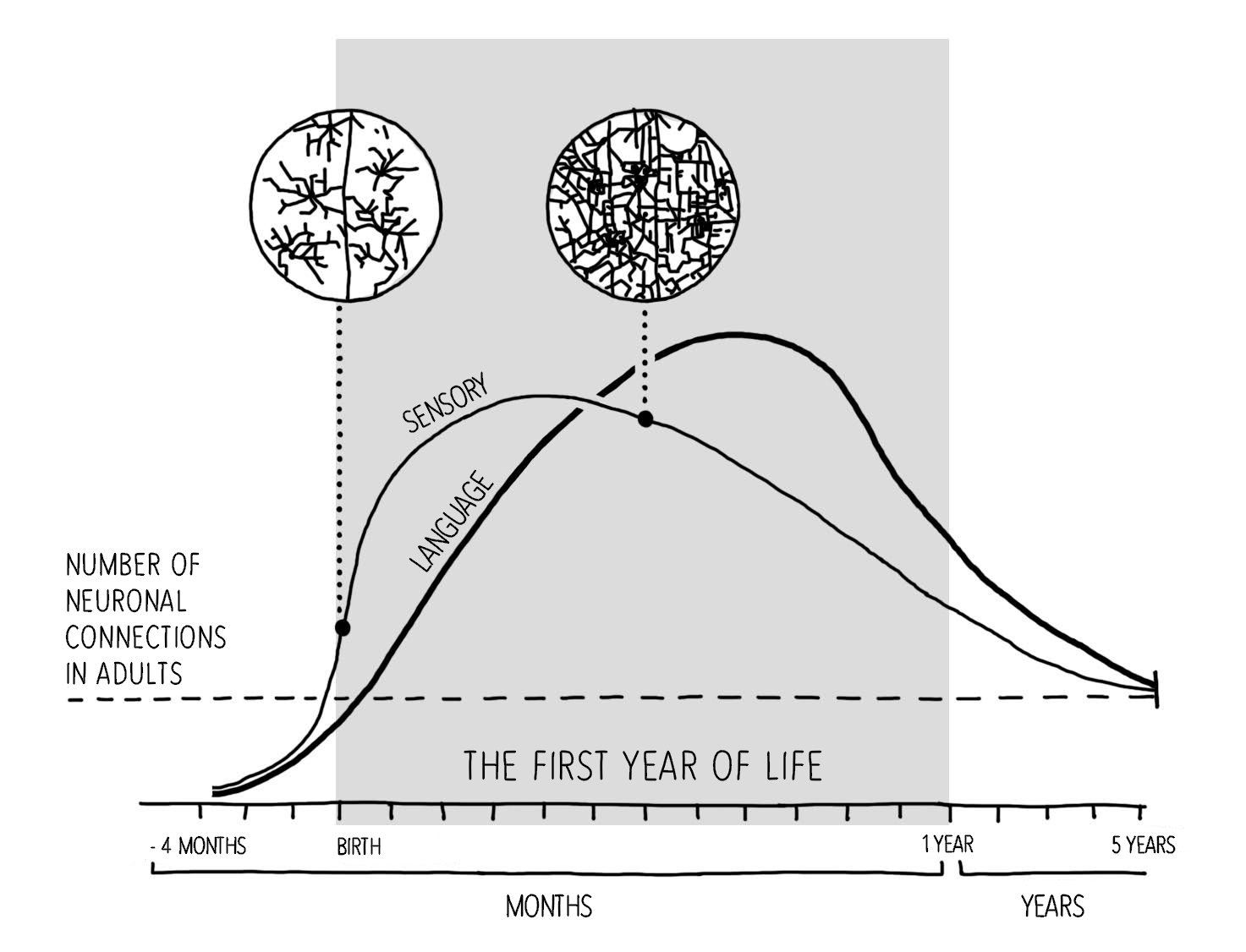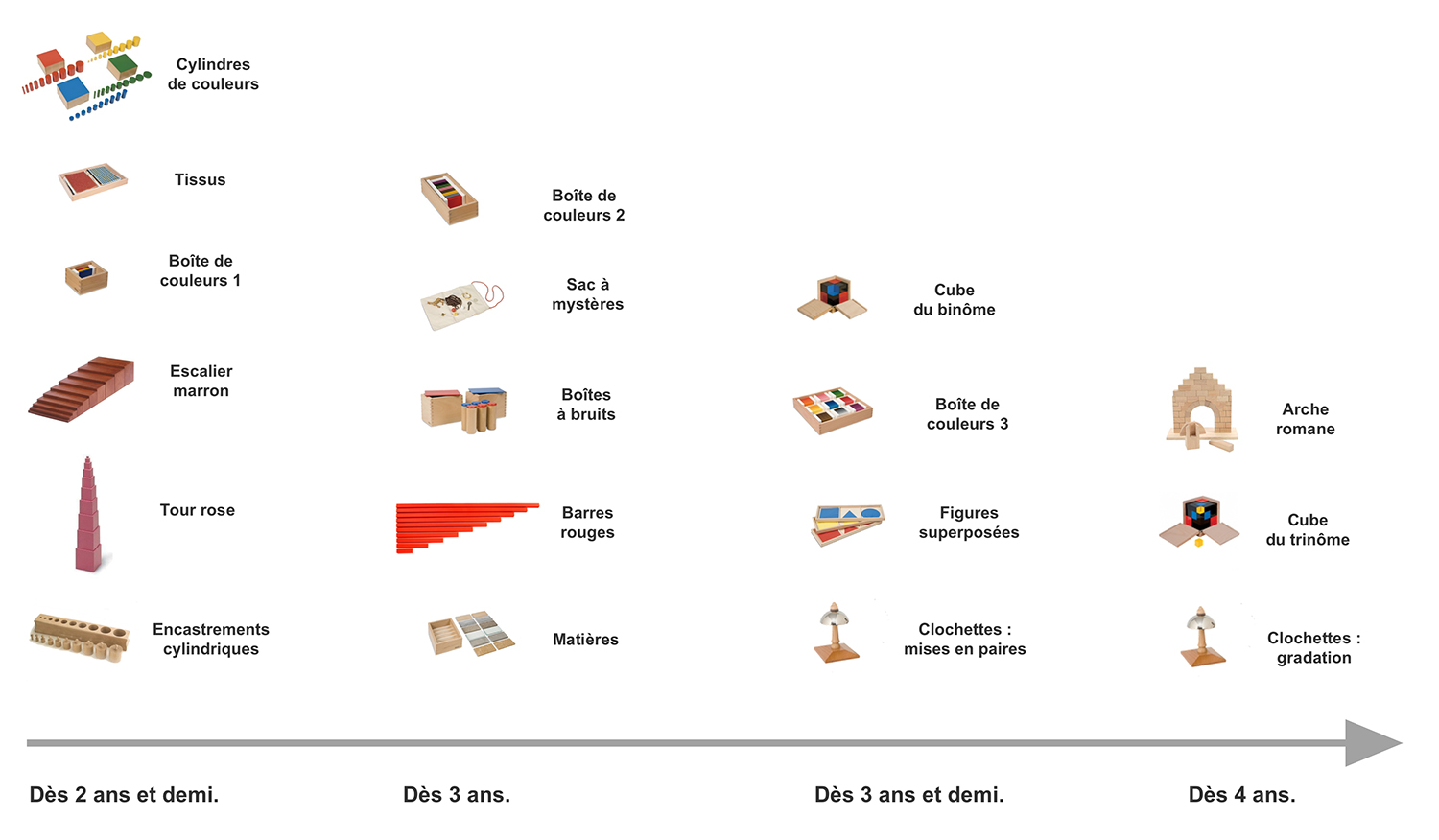Order of presentation of sense refinement activities
The sense refinement activities which we worked on with our Gennevilliers class can be presented to children aged between 2½ and 4.
Experience shows that, after the age of 4, there is a strong trailing off of interest in sense refinement activities. This would seem to be perfectly logical because the most sensitive period of sensory development is the first year of life: from birth to the age of one, the neural circuits associated with sensory capacities abound in connections and mature with great speed. During this period babies avidly explore the world around them with remarkable concentration. They observe, touch, taste and list, and it is a full-time job preventing them from touching everything and putting everything in their mouths. This is perfectly normal – they are working on constructing the foundations of their intelligence. This sensitive period is incredibly intense but relatively short: already from the age of ten months onwards, the number of connections declines sharply and gradually reaches, at the age of three, a level which is almost the same as that of an adult! 1

At the age of three, therefore, when children start at nursery school, they have already déjà laid the foundations of their sensory capacities: they are no longer in the phase of creating these skills, but rather are embarking on the phase of refining what has previously been constructed. And at the age of 4, after a year of sense refinement, children generally lose interest in these activities.
In what order should these activities be presented?
Here is a table which can serve as a guideline when you're getting started. The simplest activities are on the left. The level of difficulty increases as you move to the right.

We've arranged the activities by columns. Each column contains activities of the same level of difficulty, so you could start by presenting the activities in the first column to children aged 2½ and then move onto the next column. Needless to say, we urge you to adapt your approach to each individual child: if a child is capable, you should feel free to present to them activities from the next column even if you haven't presented all the activities in the previous column. It is important to always offer to each child an activity which is sufficiently difficult to challenge their executive skills so that they can genuinely exercise these skills. The child will give you indications as to whether the activity is suitable for them or not: if the activity is too simple or too difficult, they will start using the materials for other purposes...
However, we need to be clear about this: initially, you'll often misjudge which is the right activity, and this is completely normal and desirable even. The more you try things out, even at the risk of making a mistake, the sooner you'll learn when it's the right moment to present a particular activity. This trial and error approach will allow you to develop your own expertise. So have a look at this table just to reassure yourself, and then forget it! Taking the plunge and experimenting is the only true way of understanding which order activities should be presented in.
Enjoy your explorations!
1 Graphic created by Stephen Cafiero and based on the scientific graphic entitled 'Neural Network' presented by Lawson Parker in 'The First Year' (January 2015), National Geographic. Sources: Charles Nelson, Harvard Medical School; Pat Levitt, Children’s Hospital, Los Angeles.

